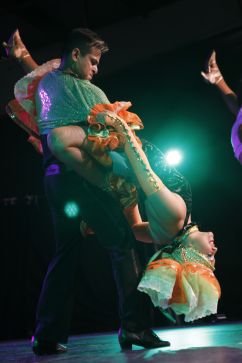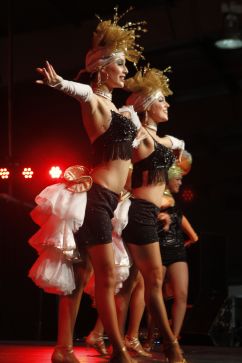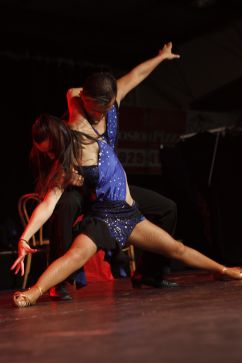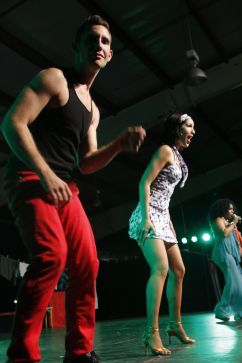 How can you not get excited about anything Cuban? The art, the cigars, the allure of Havana, the colors, old cars from the 1960s in vivacious colors lining its streets, the food, the music and the intoxicating dance of the Caribbean.
How can you not get excited about anything Cuban? The art, the cigars, the allure of Havana, the colors, old cars from the 1960s in vivacious colors lining its streets, the food, the music and the intoxicating dance of the Caribbean.
At Folkorama in late August, an annual event held in Canada’s Winnipeg, that touts more than 40 cultures, I had an opportunity to take eight country performances in over the course of my stay.
While I absolutely loved and treasured each and every one of them, the dance performances in Cuba’s pavilion blew me away….it was as if the troupe was a professionally trained one and many had experience doing musicals and global shows. It was just too good. Too polished. Too amazing.
Imagine a demo from a cigar roller followed by jugglers, magicians, a clown and “tropicana” style cabaret, cha cha cha, rumba, mambo and the conga. In addition to the intoxicating dancers, Yoslay de la Rosa and Papa Mambo heated up the stage.
Modern Cuban dance styles emerged when European settlers and African slaves came to Cuba in the 16th century. African and Europeans fused traditional dances to form a distinct and unified Cuban culture.
Named after its 19th century birthplace in Havana, the slow and graceful habanera dance has roots in English contradanza performed in ballrooms. The opera “Carmen” has a number called “habanera.”
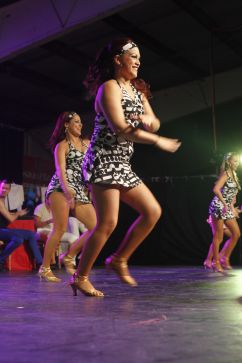 Then there’s the The Danzón, which was a style introduced in the late 1870s and became the official dance of Cuba. The dance includes off-the-beat and slow, but flirtatious, steps. More renowned around the world and popular in the states as well, is the Rumba, which emerged in the 1920s.
Then there’s the The Danzón, which was a style introduced in the late 1870s and became the official dance of Cuba. The dance includes off-the-beat and slow, but flirtatious, steps. More renowned around the world and popular in the states as well, is the Rumba, which emerged in the 1920s. 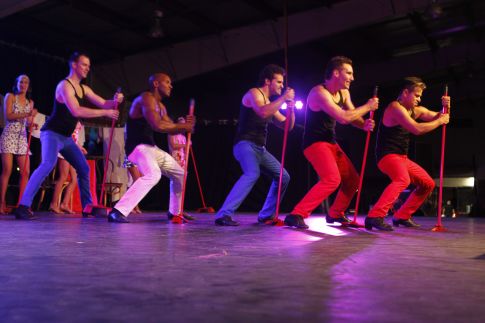
The Son began in the 1930s with rural Cubans who danced close together and off beat while accentuating hip movement. It later influenced mambo, cha-cha and salsa dancing.
Mambo is an up-tempo dance that became popular during the 1940s among North American vacationers to Cuba. Mambo utilizes the same diamond pattern of foot movements as the rumba.
One of my favorites is the Cha-Cha, which is an offshoot of the mambo, and has exaggerated hip movement and foot shuffling. I took some cha-cha classes years ago in Boston as they always include Cha-Cha as one of the traditional dances in the ballroom dance class mix.
Rumba was also popular at the time. All of them are intoxicating – LOVE the energy!
Here are some of the shots I took during the performance in Winnipeg in late August.
Below is a video I shot on-site.

Renee Blodgett is the founder of We Blog the World. The site combines the magic of an online culture and travel magazine with a global blog network and has contributors from every continent in the world. Having lived in 10 countries and explored nearly 80, she is an avid traveler, and a lover, observer and participant in cultural diversity.
She is also the CEO and founder of Magic Sauce Media, a new media services consultancy focused on viral marketing, social media, branding, events and PR. For over 20 years, she has helped companies from 12 countries get traction in the market. Known for her global and organic approach to product and corporate launches, Renee practices what she pitches and as an active user of social media, she helps clients navigate digital waters from around the world. Renee has been blogging for over 16 years and regularly writes on her personal blog Down the Avenue, Huffington Post, BlogHer, We Blog the World and other sites. She was ranked #12 Social Media Influencer by Forbes Magazine and is listed as a new media influencer and game changer on various sites and books on the new media revolution. In 2013, she was listed as the 6th most influential woman in social media by Forbes Magazine on a Top 20 List.
Her passion for art, storytelling and photography led to the launch of Magic Sauce Photography, which is a visual extension of her writing, the result of which has led to producing six photo books: Galapagos Islands, London, South Africa, Rome, Urbanization and Ecuador.
Renee is also the co-founder of Traveling Geeks, an initiative that brings entrepreneurs, thought leaders, bloggers, creators, curators and influencers to other countries to share and learn from peers, governments, corporations, and the general public in order to educate, share, evaluate, and promote innovative technologies.


